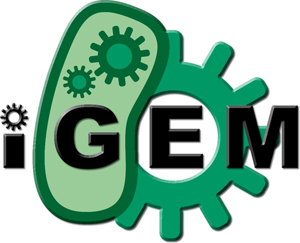Press Release: Carnegie Mellon Students Compete in International Genetically Engineered Machine Competition
Premier Synthetic Biology Competition To Hold Regional Jamboree in Pittsburgh
Contacts: Jocelyn Duffy / 412-268-9982 / jhduffy@andrew.cmu.edu
Chriss Swaney / 412-268-5776 / swaney@andrew.cmu.edu
 PITTSBURGH—Can biological building blocks be turned into a biosensor that can measure cellular activities? “Absolutely!” says a team of undergraduate students from Carnegie Mellon University. The students have created just such a biosensor using a kit of interchangeable biological parts and a fundamental knowledge of synthetic biology. They will present their project this weekend in the International Genetically Engineered Machine (iGEM) Competition’s Americas East Regional Jamboree, Oct. 12-14 at Duquesne University.
PITTSBURGH—Can biological building blocks be turned into a biosensor that can measure cellular activities? “Absolutely!” says a team of undergraduate students from Carnegie Mellon University. The students have created just such a biosensor using a kit of interchangeable biological parts and a fundamental knowledge of synthetic biology. They will present their project this weekend in the International Genetically Engineered Machine (iGEM) Competition’s Americas East Regional Jamboree, Oct. 12-14 at Duquesne University.
Synthetic biology is a field that aims to engineer biological systems to perform functions that do not exist in nature. For the iGEM competition, teams were given a toolkit of biological building blocks and asked to design and build a synthetic biological system.
“Synthetic biology is a lot like having a set of different Lego blocks. Although each block has a different function and nature, they can be linked to each other using the rules of synthetic biology. We put together different blocks not normally found together in nature to create a system that reports on the course of biological processes taking place in a cell,” said CMU team member Yang Choo, a junior chemical engineering and biomedical engineering major.
The work for the 2012 iGEM competition began this summer when 190 teams from 34 countries designed and built synthetic biology systems from a kit of standard biological parts. This fall, student teams from around the world are presenting their work to be judged in regional jamborees held in Amsterdam; Hong Kong; Bogota, Colombia; Pittsburgh; and Palo Alto, Calif. The top teams in each of these regional competitions will advance to the iGEM World Championship Jamboree, Nov. 2-5 in Cambridge, Mass.
The CMU team includes Choo; sophomore Peter Wei and senior Jesse Salazar, both electrical and computer engineering and biomedical engineering majors; sophomore Eric Pederson, a biological sciences major; and their instructors Cheemeng Tan, a Lane Post-doctoral Fellow in the Ray and Stephanie Lane Center for Computational Biology; and Natasa Miskov-Zivanov, an adjunct faculty member in the Department of Electrical and Computer Engineering who led the effort to create CMU’s iGEM team.
The student team brought together diverse interdisciplinary interests and expertise to build a biosensor using a fluorogen-activating RNA sequence called “Spinach” and a fluorogen-activating protein. The sensor glows brighter in response to cellular activities like transcription and translation. Using a mathematical model developed by Wei, the students analyzed the fluorescence results and determined the efficiency of several promoters in bacteria. The team says it should be helpful for synthetic biologists, as it provides a way for them to measure how much of a product their cell is producing. For example, synthetic biology has been used to create E. coli cells that produce biofuel; the CMU team’s sensor could be incorporated into the cell and would glow brighter based on the amount of biofuel produced, giving an easily read indicator of the cell’s efficiency.
“Our sensor allows us to quickly and accurately look at RNA and protein levels in a cell in real-time, which has many potential applications in biotechnology, medicine, cell biology and genetics,” Pederson said. “Comparatively speaking, it is a cheap and fast alternative to expensive RNA and protein analysis equipment that is expensive and requires longer time to produce results.”
The project also had an outreach component in which the students were encouraged to create a tool to help teach high school students about synthetic biology. Salazar created a circuit board that mimicked the biosensor developed by the team. The electronic circuit was adopted by DNAZone, the outreach program of CMU’s Center for Nucleic Acids Science and Technology, to teach high school students about synthetic biology.
The team was advised by Chemistry Professor Catalina Achim, Electrical and Computer Engineering Professor Diana Marculescu, Biological Sciences Professor Aaron Mitchell and Biomedical Engineering Assistant Professor Ge Yang. CMU’s iGEM team has been supported by CMU’s College of Engineering, Mellon College of Science, School of Computer Science, Center for Nucleic Acids Science and Technology, Molecular Biosensor and Imaging Center, and Ray and Stephanie Lane Center for Computational Biology.
###